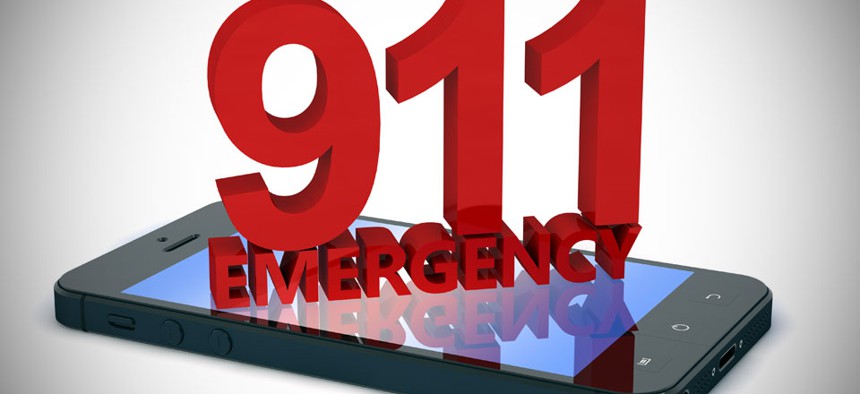The Real Reason You Can’t Text 911

Mathias Rosenthal/Shutterstock.com
Major cell phone companies are equipped to let callers text emergency call centers, but most states aren’t.
Imagine there is an intruder in your home. You are hiding under the bed. You have your cell phone. Dialing 911 might give away your hiding place, so you decide to send a text message.
You better hope you live in Vermont, Maine, or one among the handful of counties scattered across the country that are prepared to accept text messages during an emergency. Anywhere else, your text is going nowhere.
The Federal Communications Commission voted Friday to require all mobile carriers and interconnected text providers—apps such as Apple's iMessage that can send messages to phone numbers outside of the app—to let customers' text 911 by the end of the year. The big-four carriers—AT&T, Sprint, T-Mobile, and Verizon—voluntarily enabled text-to-911 capabilities in May.
But the FCC ruling is only a small step toward creating a widespread text-to-911 system.
For the system to work, 911 call centers have to be equipped to receive text messages. And right now, that's a rarity: About 2 percent of emergency call centers around the country are prepared to handle text messages, and the FCC does not have authority to require that capability.
Instead, the decision to require or not require call centers to be text-compatible belongs with individual states and counties.
Vermont became the first state to adopt text-to-911 statewide this year after an early trial with Verizon in 2012 dispelled "urban legends" that a flood of text messages would result.
David Tucker, executive director of the state's Enhanced 911 Board, said that of the 208,000 emergency calls in 2013, about 150 were text messages. Of those messages, around 10 have helped victims of domestic abuse.
Vermont's decision to make the switch was easy because the state's public-safety system is centralized. But public safety administration decisions in most other states are made at the city or county level, meaning it requires a lot more coordination and money to become text-ready.
The FCC sees the transition to text-to-911 as a chicken-and-egg problem, but hopes its mandate for text providers to send messages to 911 will expedite the adoption of the technology in emergency call centers around the country.
More than 90 percent of Americans have mobile phones, and an overwhelming majority of those use text messaging, according to Pew Research. Although voice calls to 911 are preferable because they are more reliable and the location tracking is more precise, text-to-911 could be a lifesaver for people with speech or hearing disabilities or in instances like domestic abuse or home intrusion when placing a phone call could put the victim at risk.
But some critics worry that the FCC's rules will confuse the public precisely because of the gulf between cell phones' capabilities and the reality of emergency call centers. Republican Commissioner Ajit Pai voted against it because, he says, "it encourages the public to dive into text-to-911 functionality when in reality there's hardly any water in the pool."
To mitigate this safety hazard, mobile carriers are required to send bounce-back messages to customers who attempt to text 911 in an area that is not capable of receiving them. The FCC, states, and local officials are also quick to emphasize that calling 911 is always the best way to get help during an emergency because the technology can track your precise location.
Republicans and some mobile carriers are worried, ironically, that the SMS-focused mandate will distract resources from deploying what is known as Next Generation 911—a nationwide initiative to transition all public-safety centers to Internet-based technology. In a world of NextGen 911, IP technologies people will be able to send voice calls, text messages, and multimedia with significantly improved location tracking.
( Image via Mathias Rosenthal / Shutterstock.com )
NEXT STORY: IT Needs Audacity, Adaptiveness and Engagement





